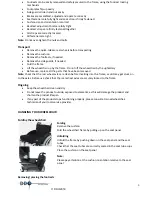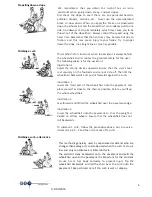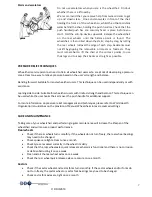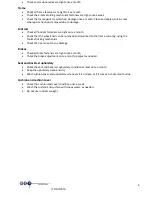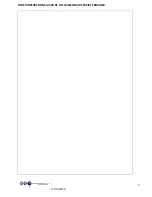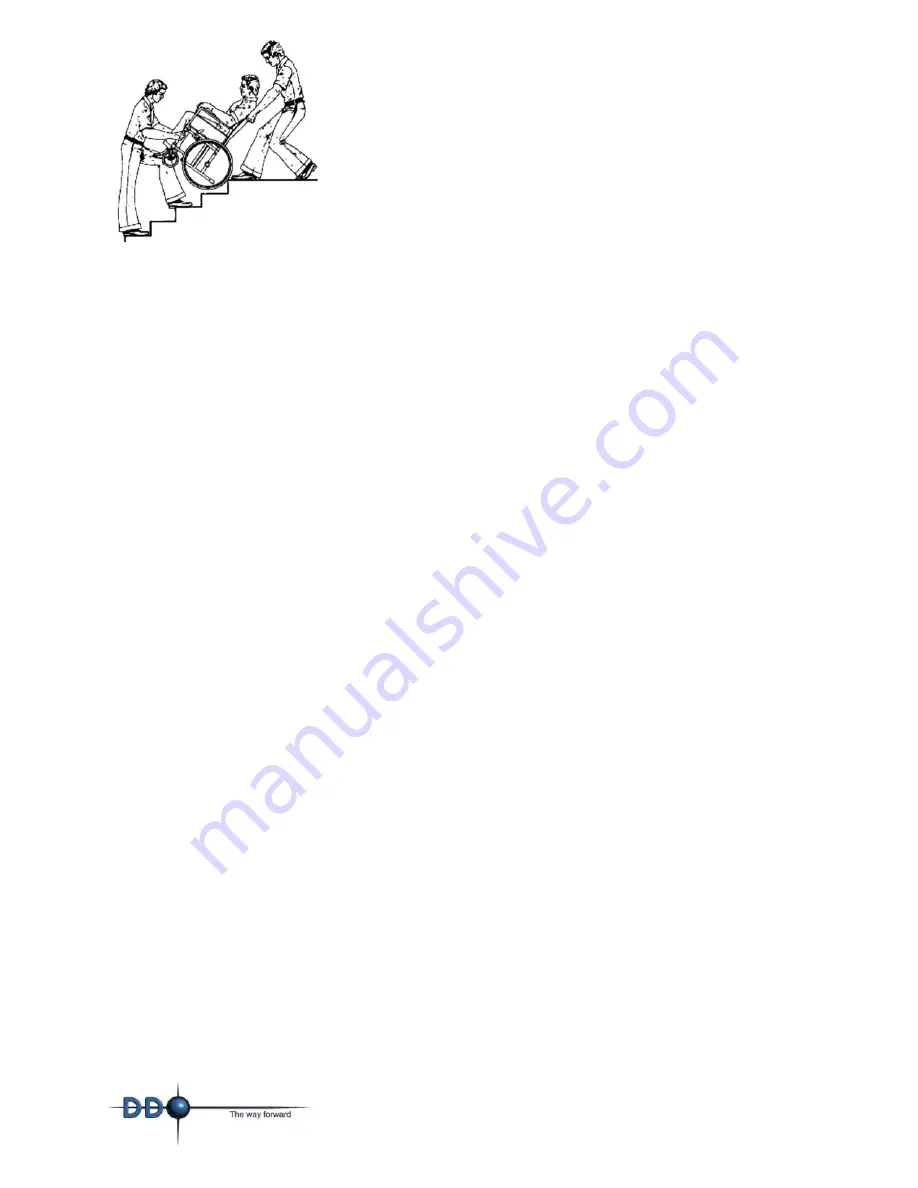
© DDO2018
7
Stairs and escalators
Do not use escalators when you are in the wheelchair
.
Find out
whether there is a lift nearby
.
We
recommend
that you receive help from two
assistants
to get
up and down stairs. One
assistant
walks in front of the chair
holding the frame of
the
wheelchair, whilst the other assistant
walks behind the chair, holding the push
handles
.
Check that the
push handles/push bar are securely fixed in place before you
start
.
Fold the
anti‐tip
devices upwards. Balance the wheelchair
on
the
rear wheels
until
the balance point is found
.
The
wheelchair
is then rolled
down the stairs, step by step, by
letting
the rear wheels roll over
the
edge of each step
.
Assistants must
not lift by gripping the
removable
armrests or footrests. They
must remember to lift the chair at the correct points,
to
use
their legs
and
to keep their backs as straight
as
possible.
PRESSURE RELIEF TECHNIQUES
Wheelchair service personnel need to train all wheelchair users who are at risk of developing a pressure
sore at least one way to relieve pressure based on the user’s strength and balance.
Bending forward: Suitable for most wheelchair users. This technique can be used independently or with
assistance.
Leaning side to side: Suitable for wheelchair users with limited strength and balance. This technique can
be used while the user hooks their arm over the push handle for additional support.
For more information on pressure relief management and techniques, please refer to World Health
Organization’s Guidelines on the provision of Manual Wheelchairs in less resourced settings.
CARE AND MAINTENANCE
Taking care of your wheelchair and performing regular maintenance will increase the lifespan of the
wheelchair and will ensure product performance.
Rear wheels
Check if the rear wheels turn smoothly. If the wheels do not turn freely, the rear wheel bearings
may need to be changed
Check spokes are tight at least once a month
Check tyres are seated correctly in the wheel rim daily
Check that the rear wheel axles quick release mechanism is functional and there is no corrosion
or debris obstructing it once a week
Clean and oil the rear wheel axles once a week
Check the rear wheel quick‐release axles are secure once a month
Castors
Check if the castor wheels and castor forks turn smoothly. If the castor wheels and/or forks do
not turn freely, the castor wheel or castor fork bearings may need to be changed
Check castor fork axles are tight once a month



